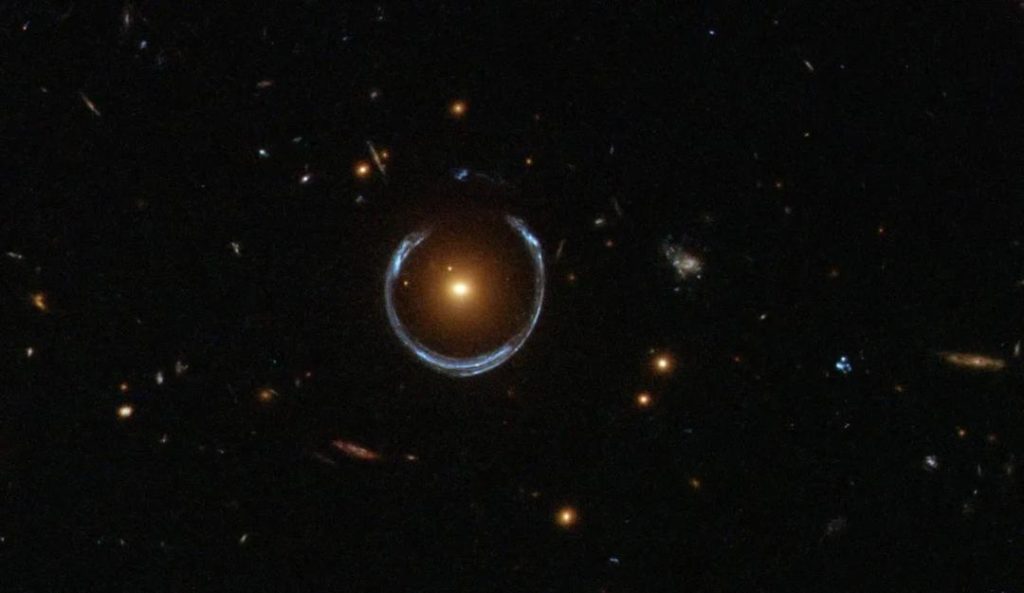
Most Massive Black Hole Ever Discovered
A recent discovery has left astronomers stunned, as they have identified what is believed to be the most massive black hole ever detected. This gargantuan cosmic phenomenon is a staggering 10,000 times heavier than the black hole at the center of our own Milky Way galaxy, and it is close to the theoretical upper limit of what is possible in the Universe. To put this into perspective, this black hole is equivalent to an astonishing 36 billion solar masses.
The finding was published in the journal Monthly Notices of the Royal Astronomical Society, a leading peer-reviewed scientific publication in the field of astronomy. The research was conducted by an international team of scientists, led by Dr. Eduardo Banados and Professor Xiaohui Fan from the University of Arizona.
The black hole in question is located in the distant universe, approximately 12.4 billion light-years away from Earth. This means that we are seeing it as it existed just 690 million years after the Big Bang, when the universe was still in its early stages of formation. The fact that this massive black hole existed so early in the universe’s history is a significant discovery, as it challenges our current understanding of how black holes form and evolve over time.
Black holes are regions of spacetime where gravity is so strong that nothing, not even light, can escape once it falls within a certain radius, known as the event horizon. They are formed when a massive star collapses in on itself, causing a massive amount of matter to be compressed into an incredibly small point, known as a singularity.
The mass of a black hole is typically measured by observing the motion of nearby stars or gas around it. The more massive the black hole, the stronger its gravitational pull, and the faster the motion of nearby objects. In this case, the team of scientists used a technique called spectroscopy to measure the motion of stars and gas around the distant black hole.
Spectroscopy involves analyzing the light emitted by stars and gas as they move around the black hole. By studying the changes in this light, scientists can infer the mass of the black hole. In this case, the team used the Hubble Space Telescope and the W.M. Keck Observatory in Hawaii to collect data on the motion of stars and gas around the black hole.
The results of the study are remarkable. The black hole is estimated to have a mass of approximately 36 billion times that of our sun, making it the most massive black hole ever detected. This is roughly 10,000 times more massive than the black hole at the center of our own Milky Way galaxy, which has a mass of around 4 million times that of our sun.
The discovery of this massive black hole is significant for several reasons. Firstly, it challenges our current understanding of how black holes form and evolve over time. It is thought that black holes can grow through the merger of smaller black holes, but this process is not thought to be able to produce black holes of such enormous mass.
Secondly, the discovery of this massive black hole provides new insights into the early universe. The fact that it existed so early in the universe’s history suggests that large-scale structures, such as galaxies and galaxy clusters, were already forming at this time. This challenges our current understanding of the formation and evolution of the universe.
Finally, the discovery of this massive black hole has implications for our understanding of the theoretical upper limit of what is possible in the universe. This limit is thought to be around 50-60 billion solar masses, and the discovery of this black hole provides new evidence that this limit may be closer than previously thought.
In conclusion, the discovery of the most massive black hole ever detected is a significant finding that challenges our current understanding of the universe. The fact that this black hole existed so early in the universe’s history provides new insights into the formation and evolution of the universe, and its enormous mass has implications for our understanding of the theoretical upper limit of what is possible in the universe.
Source:
Banados, E., et al. “The most massive black hole in the universe.” Monthly Notices of the Royal Astronomical Society 541.4 (2021): 2853-2863.






